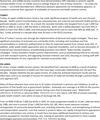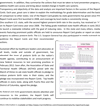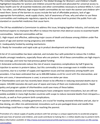Born too soon: accelerating actions for prevention and care of 15 million newborns born too soon
- PMID: 24625252
- PMCID: PMC3828574
- DOI: 10.1186/1742-4755-10-S1-S6
Born too soon: accelerating actions for prevention and care of 15 million newborns born too soon
Abstract
Preterm birth complication is the leading cause of neonatal death resulting in over one million deaths each year of the 15 million babies born preterm. To accelerate change, we provide an overview of the comprehensive strategy required, the tools available for context-specifi c health system implementation now, and the priorities for research and innovation. There is an urgent need for action on a dual track: (1) through strategic research to advance the prevention of preterm birth and (2) improved implementation and innovation for care of the premature neonate. We highlight evidence-based interventions along the continuum of care, noting gaps in coverage, quality, equity and implications for integration and scale up. Improved metrics are critical for both burden and tracking programmatic change. Linked to the United Nation’s Every Women Every Child strategy, a target was set for 50% reduction in preterm deaths by 2025. Three analyses informed this target: historical change in high income countries, recent progress in best performing countries, and modelling of mortality reduction with high coverage of existing interventions. If universal coverage of selected interventions were to be achieved, then 84% or more than 921,000 preterm neonatal deaths could be prevented annually, with antenatal corticosteroids and Kangaroo Mother Care having the highest impact. Everyone has a role to play in reaching this target including government leaders, professionals, private sector, and of course families who are aff ected the most and whose voices have been critical for change in many of the countries with the most progress.
Figures














References
Publication types
MeSH terms
LinkOut - more resources
Full Text Sources
Other Literature Sources
Medical
Molecular Biology Databases

